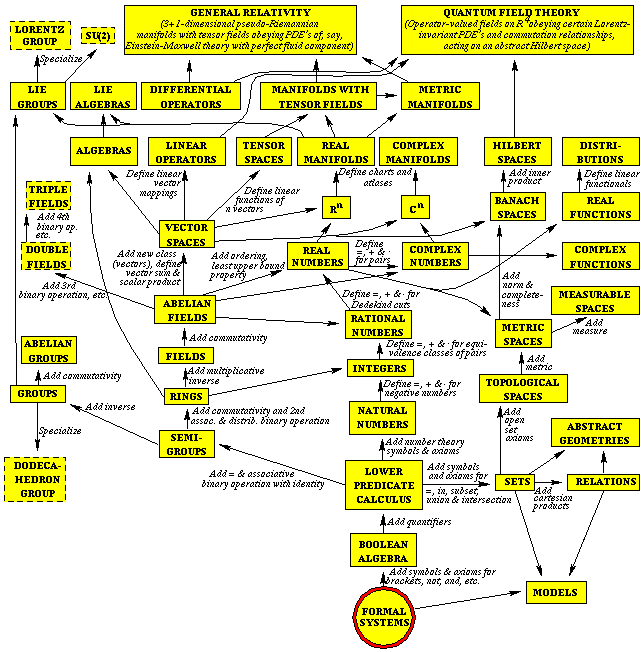Journal: Feb 26, 2009
Bryan Newbold, bnewbold@mit.edu
http://web.mit.edu/bnewbold/thesis/
I've started writing some things up, look in the draft
folder. Very rough, just putting down ideas to see what structure emerges.
Type Hierarchies
The sage math rough documentation on coercion and arithmetic is at
http://www.sagemath.org/doc/prog/node22.html. It mostly uses the python
object system with a variety of Fields to handle arbitrary precision numerical
data (RealField and ComplexField can be specified by precision).
AXIOM has great graphs of their huge algebraic hierarchy (warning: large
slow svg files!):
abreviated category and domain,
everything?.
Axiom uses strict type checking (everything gets compiled down?); every type is
a category which allows for checking of properties and mathematical
correctness. The interpreter guesses what type/category user input should be.
There is a good overview here.
To paraphrase: every object is of a single type called it's domain ("domain of
computation", eg "String", "Float". Domains themselves have a type called a
Category (disclaimer: I don't know anything about category theory). The
Categories for hierarchies ("directed acyclic graphs"), eg:
SetCategory +---- Ring ---- IntegralDomain ---- Field
|
+---- Finite ---+
| \
+---- OrderedSet -----+ OrderedFinite
Packages are special domains which just have associated polymorphic operators
(so they are generic on inputs?).
From the documentation:
"Roman numerals are also available for those special occasions."
Interesting stuff! The main book explains a lot about how types are
coerced together for operations etc.
Singular has a list of types
here
; it includes:
bigint def ideal int intmat intvec link
list map matrix module number package poly
proc qring resolution ring string vector.
Cadabra is an interactive C++ system designed specifically for tensor
manipulation in physics (usually HEP?). It describes some of it's important
features as:
Built-in understanding of dummy indices and dummy symbols, including
their automatic relabelling when necessary.
Powerful algorithms for canonicalisation of objects with index
symmetries, both mono-term and multi-term.
A new way to deal with products of non-commuting objects, enabling a
notation which is identical to standard physicist's notation (i.e. no need for
special non- commuting product operators).
A flexible way to associate meaning ("type information") to tensors by
attaching them to "properties".
With respect to some sort of absolute mathematical type hierarchy, one of my
favorite papers by Max Tegmark ("The Mathematical Universe"):

Tools Needed
Basic multivariable calculus tools to be extended for differential geometry:
integral
derivative
partial derivative
curl
divergence
taylor expansion
Eg, (taylor function variable point number) would give a list
of the first *number* terms of the taylor expansion of *function* by
*variable* around *point*.
(previous entry) -
(next entry)
